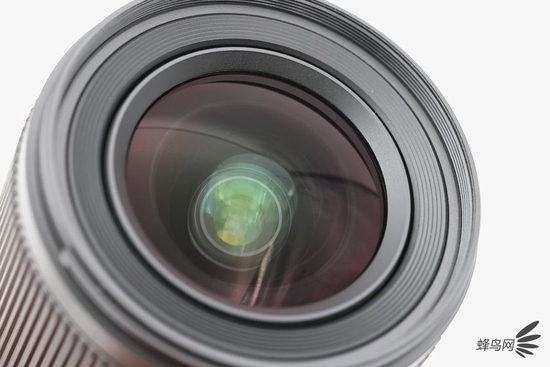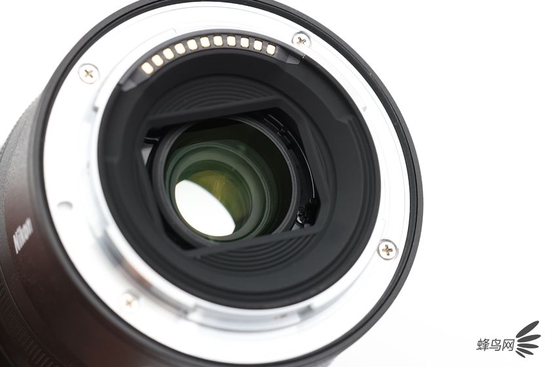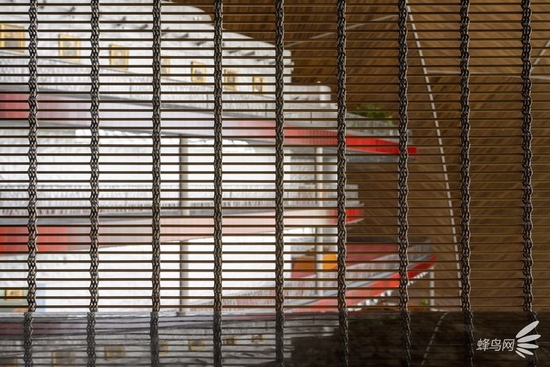New cool products will be tested for free for the first time, and many high-quality talents will share their unique life experiences. Come to Sina Public Test and experience the most cutting-edge, most interesting and fun products in various fields~! Download the client and get exclusive benefits!
This article comes from Hummingbird Network
·Evaluation Preface Product Introduction
The Nikkor Z 17-28mm f/2.8 did not appear on the roadmap of the Nikon Z mount lens before, but was released suddenly with the previous Nikkor Z 28-75mm f/2.8, because that lens also did not appear On the route planning of the previous Nikon Z mount lens. The release of the NIKKOR Z 17-28mm f/2.8 lens also gives Nikon Z system users a new choice in the choice of wide-angle zoom lenses. Currently, Z mount users can choose the NIKKOR Z 14-24mm f/ 2.8 S, NIKKOR Z 17-28mm f/2.8, and NIKKOR Z 14-30mm f/4 S, the NIKKOR Z 17-28mm f/2.8 released this time is an f/2.8 ultra-high that can be easily carried around. Wide zoom lens because this lens is more portable, slimmer and lighter.
Nikkor Z 17-28mm f/2.8With Nikon Z 9
In order to test this lens this time, the body I chose is the Nikon Z 9. The Z 9 is a performance flagship of Nikon. Not only the focusing system can be called the top level of Nikon, but also the continuous shooting, image quality and other aspects. The performance is also quite good. Although the size of this machine is not as portable as the Nikon Z 7II, it is absolutely no problem to use this machine with this lens. All the test items and sample shooting in this article are made with the Z 9. Shot with this lens.

Nikkor Z 17-28mm f/2.8With Nikon Z 9
NIKKOR Z 17-28mm f/2.8 specification
· Focal length: 17-28mm
Maximum aperture: f/2.8
Minimum aperture: f/22
Viewing angle: 104°-75° (35mm full-frame mirrorless camera)
Lens structure: 13 elements in 11 groups
·The closest shooting distance: 0.19m
Special lenses: 2 low dispersion ED, 1 enhanced low dispersion ED, 3 aspherical
·Maximum magnification: 0.19 times
Filter diameter: Φ67mm
·Maximum diameter: Φ75mm
Length: 101mm
·Weight: 450g
Aperture blades: 9
Standard accessories: petal-shaped hood, lens cap
Applicable mount: Nikon Z

Nikkor Z 17-28mm f/2.8With Nikon Z 9

Nikkor Z 17-28mm f/2.8With Nikon Z 7Ⅱ
The NIKKOR Z 17-28mm f/2.8 adopts an internal zoom structure design. The optical structure uses 13 elements in 11 groups, including 2 ED low-dispersion lenses, 1 enhanced ED low-dispersion lens, and 3 lenses. Aspherical lens; the maximum aperture is f/2.8, and the minimum aperture is f/22; the closest focusing distance is 0.19m (17mm end), the maximum magnification is 0.19 times, the filter diameter is 67mm, and the volume of φ75mm×101mm is matched with 450g The weight is very small and portable, the lens also adopts a simple drip-proof structure, and an anti-fouling coating that is not easy to adhere to smudges and is easy to maintain.
·Appearance details
The NIKKOR Z 17-28mm f/2.8 is similar to the lens design concept of the previous NIKKOR Z series, and the overall design is more low-key, elegant, and tasteful. The lens barrel of this lens is not long, only 101mm, the filter diameter is 67mm, and the entire lens barrel is not designed with any function switches. When I got this lens, I immediately thought of the Nikkor Z 28-75mm f The /2.8 lens has the same filter diameter of 67mm, so if you buy these two lenses, you can shoot at a focal length of 17-75mm.

Nikkor Z 17-28mm f/2.8
As for the detail design of the Nikkor Z 17-28mm f/2.8 lens body, although this lens is a non-S-type lens, the overall workmanship is relatively delicate, and different areas still use different spraying processes. The lens continues the design style of the Z series lenses, especially the large “NIKKOR” logo on the front of the lens and the lens focal length and aperture logo, which are very recognizable, and the model of this lens can be seen at a glance from the front.

NIKKOR Z 17-28mm f/2.8 lens model number

NIKKOR Z 17-28mm f/2.8 Wide Zoom Ring

The NIKKOR Z 17-28mm f/2.8 is also equipped with a multifunction control ring
As a NIKKOR Z series lens, the NIKKOR Z 17-28mm f/2.8 is also equipped with a multi-function control ring. This control ring can realize adjustments such as aperture, ISO, shutter speed, exposure compensation, etc. It depends on the user’s own preferences. In addition, this lens is also equipped with a wide zoom ring and is wrapped with a rubber skin material. The actual control feels delicate and the damping is moderate.

NIKKOR Z 17-28mm f/2.8 Origin and lens number

NIKKOR Z 17-28mm f/2.8 brand logo
The NIKKOR Z 17-28mm f/2.8 adopts an internal zoom structure design. Whether it is at the 17mm end or at the 28mm end, the length of the overall lens does not change, and the closest focusing distance of this lens at the 17mm end is only 0.19m, coupled with the constant f/2.8 aperture of this lens, can create a very good background blur effect for close-up shooting. If you like wide-angle macro photography, you might as well consider this NIKKOR Z 17-28mm f/2.8.

NIKKOR Z 17-28mm f/2.8 at the 17mm end of the front lens group

NIKKOR Z 17-28mm f/2.8 at the 28mm end of the front lens group

NIKKOR Z 17-28mm f/2.8 mount and rear mirror group
The Nikkor Z 17-28mm f/2.8 lens has a yellow-green coating on the front lens group and rear lens group, but the official did not mention the coating of this lens, and we all know that the coating is good. To a large extent, it can affect the generation of glare and ghosting, so here I will explain it to you in the actual shooting later.

NIKKOR Z 17-28mm f/2.8 with lotus hood
The NIKKOR Z 17-28mm f/2.8 lens is also equipped with a lotus-shaped hood, and the inside of the hood is also equipped with a matting thread, which can effectively prevent the light that affects the quality of the image from entering the camera during actual shooting; it is worth mentioning What’s more, the NIKKOR Z 17-28mm f/2.8 lens and HB-107 hood are all made in China.
17mm resolution real shot
I believe that the resolution performance of the Nikkor Z 28-75mm f/2.8 has been heard and seen by film lovers more or less. As a wide-angle supplement to this lens, many people also look forward to it, so When the Nikkor Z 17-28mm f/2.8 was released, many people were also looking forward to the resolution performance of this lens, so how does it actually perform? Let’s take a look together. (This lens is an engineering prototype, the test results are for reference only)

The red box is the 100% screenshot area

The Nikkor Z 17-28mm f/2.8 performs very well at the 17mm end. The maximum aperture of f/2.8 maintains a fairly high center sharpness, while the edge image quality is slightly loose. After closing the aperture by one stop, both center and edge image quality Both have been significantly improved, and this high sharpness has been maintained until f/16, and when the aperture is searched to f/22, the image quality further deteriorates. In fact, the overall performance is pretty good.
28mm resolution real shot
Next, let’s take a look at the performance of the Nikkor Z 17-28mm f/2.8 lens at the 28mm end. After all, this lens is still a wide-angle lens even if it reaches the longest focal length of 28mm. Can the image quality performance be satisfactory? ? Here my test method is the same as the 17mm end, fixing the ISO, adjusting the aperture value step by step, and taking 100% of the center and edge image quality tabs. (This lens is an engineering prototype, the test results are for reference only)

Picture description The red frame is the 100% screenshot area

Judging from the actual effect of taking screenshots, at the 28mm end, the center of the maximum aperture f/2.8 shows a good sharpness, while the edge image quality is a bit loose like that of 17mm. After shrinking the aperture by one stop, whether it is sharpness or detail The performance is very good. At f/22, the picture quality is degraded due to the phenomenon of small aperture diffraction, but it is not serious. The overall performance is similar to that of the 17mm end.
·Ghost Flare Dispersion Real Shot
The Nikon official did not mention the coating of the Nikkor Z 17-28mm f/2.8, so before the actual shooting, I was not sure about the ghosting and flare phenomenon of this lens. The actual shooting will find that the Nikkor Z 17-28mm The f/2.8 can still see a certain amount of ghosting flare when shooting against the light. I think this may be the only thing that makes me feel uncomfortable in my actual use of this lens. (This lens is an engineering prototype, the test results are for reference only)

Nikkor Z 17-28mm f/2.8 ghost flare real shot

Focal Length: 28mm Aperture: f/2.8 ISO Sensitivity: 64
Exposure time: 1/2000s Exposure compensation: 0EV White balance: Auto

Screenshot of highlight position

Screenshot of highlight position
After taking the actual shooting and capturing the highlight position, it can be found that the performance of the Nikkor Z 17-28mm f/2.8 lens in terms of dispersion is quite good. Very slight chromatic dispersion, which I think is completely negligible by my judging criteria.
·Vignette distortion real shot
For an ultra-wide zoom lens, the effect of vignetting and distortion on the image quality is particularly important, so for these two test items, I think it is necessary to actually shoot and test them, so the next step is to Let’s see how the Nikkor Z 17-28mm f/2.8 performs in terms of vignetting and distortion. (This lens is an engineering prototype, the test results are for reference only)


In the vignetting test, I still turned off the in-camera lens compensation function. The vignetting performance at the 17mm end and the 28mm end is the same. There is only a slight vignetting phenomenon at the maximum f/2.8 aperture, and the aperture is reduced by one stop to After f/4, the vignetting phenomenon is almost invisible. If the in-camera lens compensation function is turned on, this lens has no vignetting at the maximum aperture of f/2.8 at the 17mm end or 28mm end, at least it is invisible to the naked eye. angle phenomenon.

Nikkor Z 17-28mm f/2.8 Distortion Real Shot (17mm)

Nikkor Z 17-28mm f/2.8 Distortion Real Shot (28mm)
In the distortion real shooting session, the distortion of the Nikkor Z 17-28mm f/2.8 lens is satisfactory whether it is at the 17mm end or at the 28mm end, and the distortion is basically invisible to the naked eye. Personally, I think that such distortion control can be achieved, which is still very good for an ultra-wide zoom lens.
